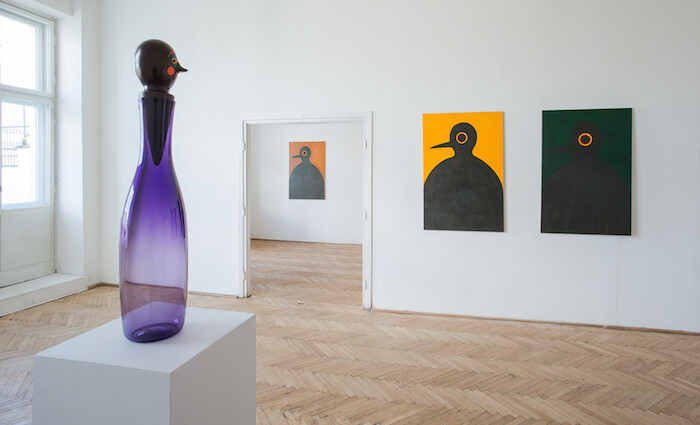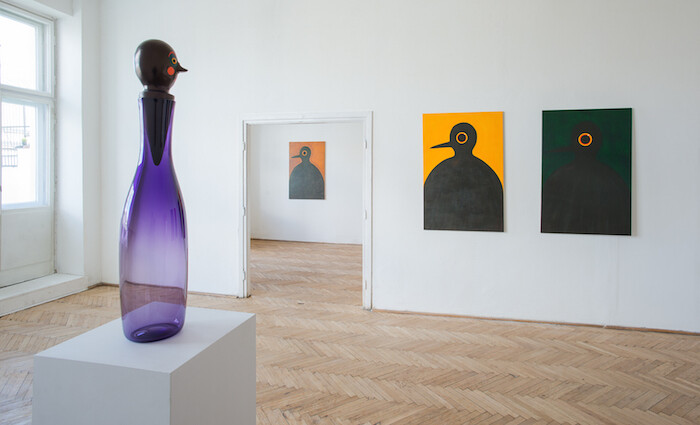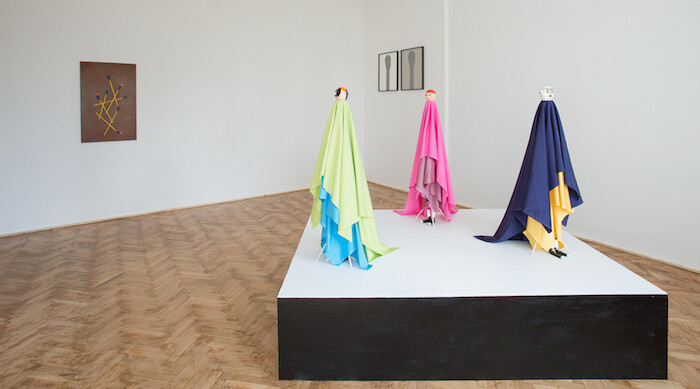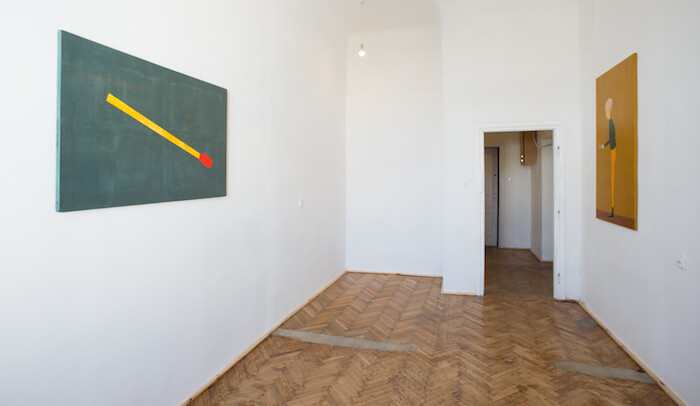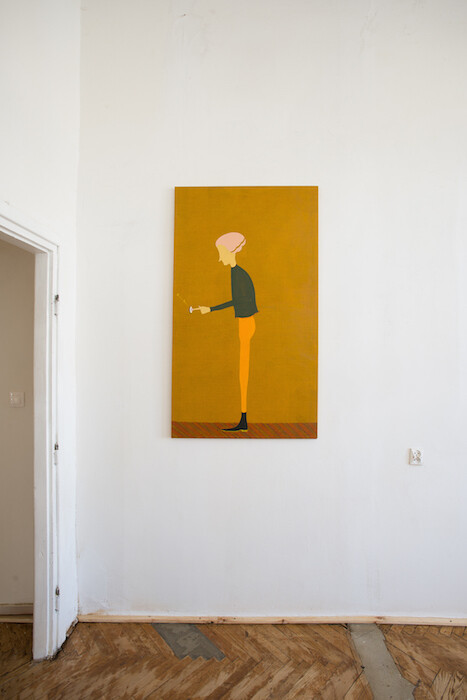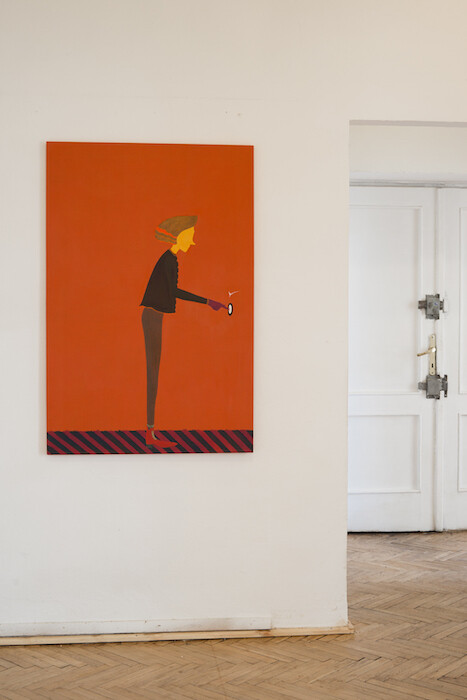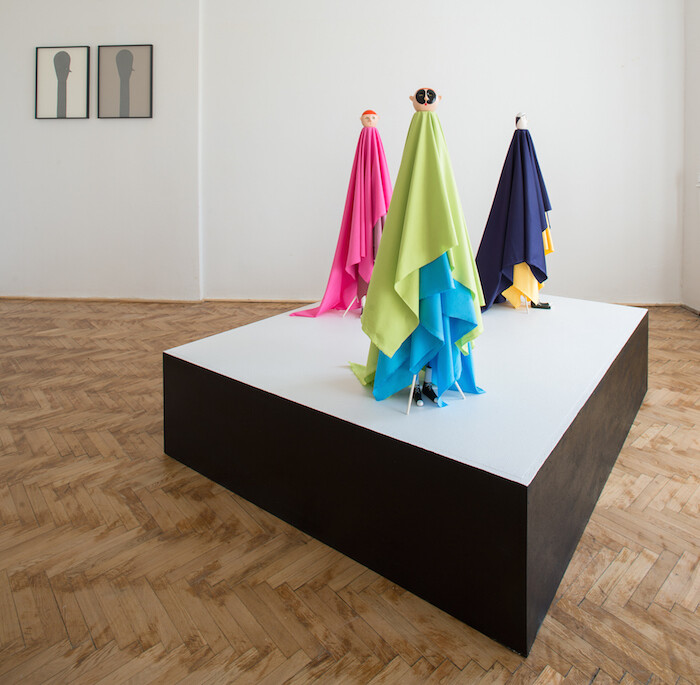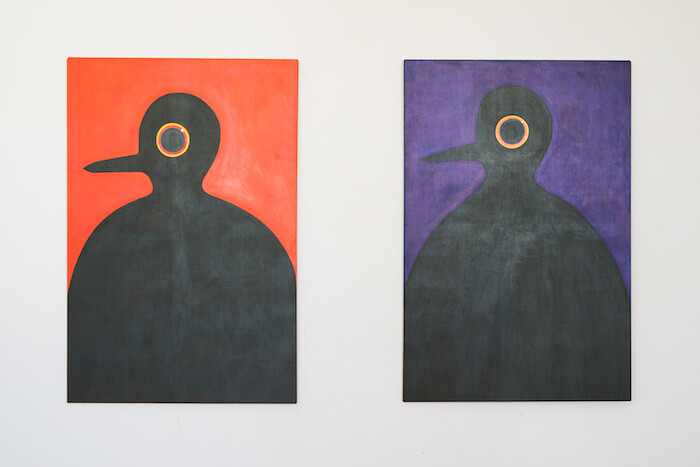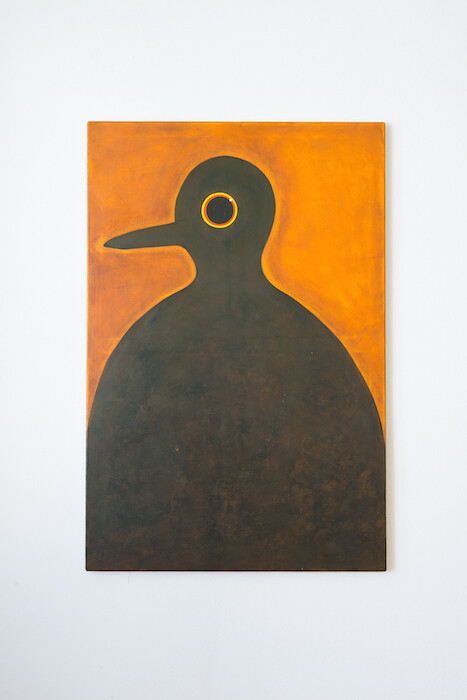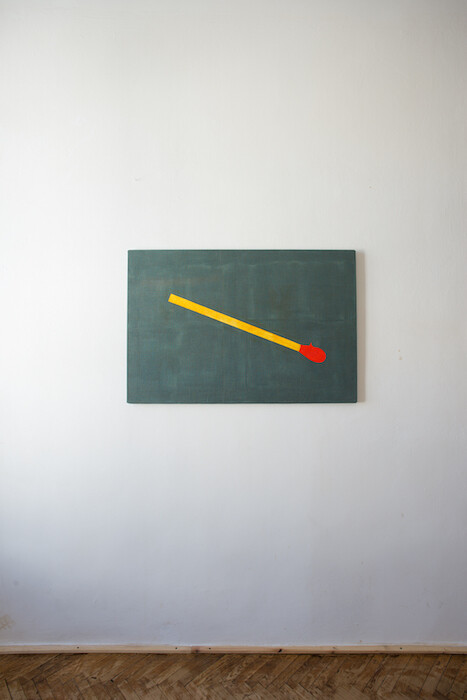If the buzzer rings, will you open? Dangers are legion: scammers, Jehovah’s witnesses, traveling salesmen, black-eyed children, werewolves. Better to keep the door closed. Much can be inferred from the social response to buzzing at the door. I’ve lived through the transition from the most pedestrian of locks to an impressive surface-mounted deadbolt, and the corresponding protocols, from spontaneously opening the door, regardless of who’s there, to the fearful world of spy holes and intercoms––and yet nothing could have prepared me for the vault-door kind of thing I encountered in the Americas. Moving to East Berlin, on the other hand, was like traveling through time back to the days of social democracy, before widespread social paranoia and rampant inequality.
Polish-born artist Dorota Jurczak’s characters also seem to belong to a gentler world, which, somewhat paradoxically, is also more somber than ours. In her paintings exhibited at Galeria Piktogram, two of the artist’s slender and demure figures ring the buzzer: Bzzz and Bzzz Bzzz (both 2013). No Bzzz Bzzz Bzzz, as that would seem a tad compulsive. Besides, no matter how much they rang, the door would never be opened: none of the remaining protagonists in Jurczak’s paintings and sculptures have any arms! untitled (Schmuko), untitled (Jevi), and untitled (Sib)––all from 2015–– seem unfazed; Jevi looks circumspect, Sib slightly passive, and Schmuko somewhat aloof––more gatekeepers than a welcoming committee. Only Ludwik 6 (2015) is apparently alarmed, though there’s not much he can do: his body is a bottle, so whatever happens he won’t be able to flee. As for the clamor of rook-men who seem to perch overhead––Brahma, Brahma I, Brahma II, Brahma III, and Brahma IV (2014-15) and the ill-fated matchstick-men, all called Zapalki (2014-15)––we have no way of knowing, based on their expression, if they can hear you.
Jurczak’s figures are secretive and inscrutable, frail yet haunting––perhaps signaling that misfortune always hovers invisibly over everyone’s heads?––with delicate frames, which draws them close to the tradition of (mostly Czech) illustration, animation, and puppet theatre, which at present feels oddly distant from the contemporary art context. Within modern art, folklore and figuration are mostly associated with the regressive sentiments prevalent in the work of the Pre-Raphaelites and the Symbolists, hence assimilated into the downward motion towards decadence and degeneracy, whereas the movement towards abstraction was codified as an upward motion, synonymous with progress. Clement Greenberg’s school of thought argued that the essence of modernism lay in the use of a discipline’s own methods in order to entrench it more firmly in its area of competence, progressively eliminating those elements that were beside its point.1 As Fredric Jameson noted, “the shorthand of visuality will then mark mass culture as ‘degraded’ (…) by comparison with the anti-visuality, the anti-representational convictions, of the various high modernisms.”2 But these aesthetic partitions also have a geopolitic correlate. In the early 1950s, abstract expressionism was widely promoted as a placeholder for American values, like free thought and free markets, as well as the best way to challenge both the Socialist Realist styles prevalent in Eastern Bloc nations and the dominance of European modernists in the art market.3 The West stylized the ever-expanding capitalist frontier, forging an identity between speedy turnover, broad brushstrokes, and frenzied cartoons; by contrast, Eastern European art felt quaint, timid, and arcane. But abstraction is not merely an aesthetic style or a metaphysical inclination, it’s the process through which multiplicity is subsumed into homogeneity, and difference is subsumed into regularity, purging the imaginary of everything eerie or unsettling, and ultimately purging art of everything imaginary.
When Pop re-opened the floodgates of figuration, folk culture came back, yet this time round in the guise of the ready-made. Jurczak’s work sits uncomfortably within this production canon, prompting a rethinking of this logic of genres and periodization. Whereas pop objects operate within the twin principles of alienation and reification, folk tales typically treat objects (usually animate household objects) as social exteriorities (restrictions, repressions) made into human-like form––they represent the labor of the non-human, rather than congealed labor. Repetition is ominous rather than numbing. Folk tales also often revolve around an interdiction (“don’t go there”/ “don’t open that door”), which is always meant to be broken. Even when no one has any limbs, buzzers will ring, doors will be opened, and matches will be lit.
Clement Greenberg, “Modernist Painting” (1961), http://cas.uchicago.edu/workshops/wittgenstein/files/2007/10/Greenbergmodpaint.pdf; and Donald Kuspit, “art criticism,” in Encyclopedia Britannica, http://universalium.academic.ru/247410/art_criticism.
Martha Rosler, “Culture Class: Art, Creativity, Urbanism, Part I,” e-flux Journal no 21, (December 2010). For details about how the CIA financed and organized the promotion of Abstract Expressionists as part of a policy of cultural hegemony and imperialism via the Congress for Cultural Freedom from 1950–67, see: Frances Stonor Saunders, “Who Paid the Piper?: The CIA and the Cultural Cold War,” (London: Granta), 1999.
Fredric Jameson, “In Hyperspace,” London Review of Books, vol 37, no 17 (September 2015): 17-22.
